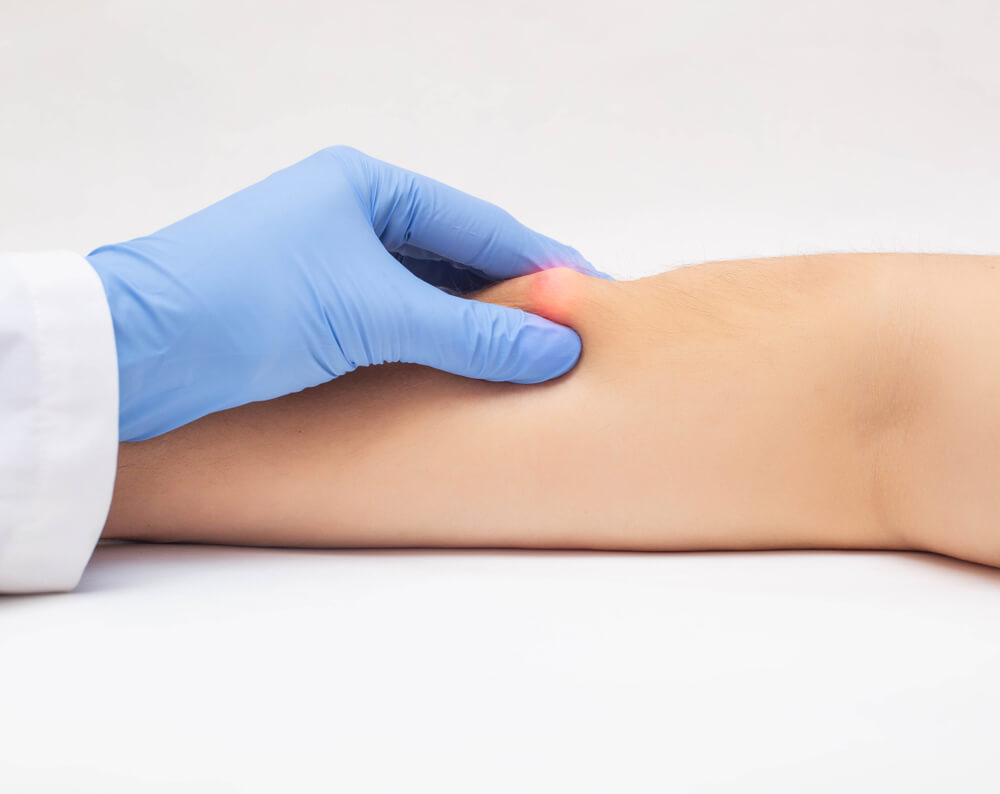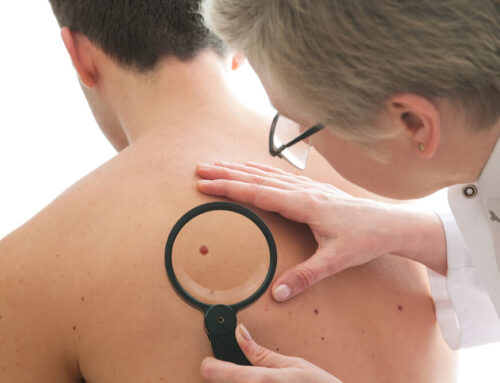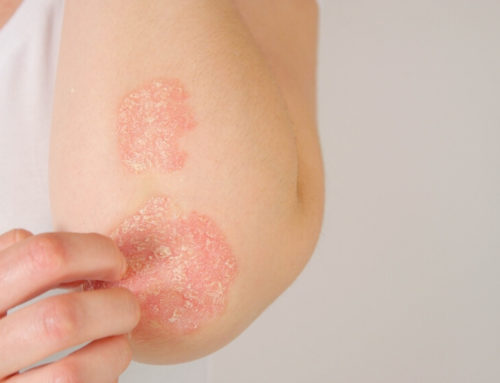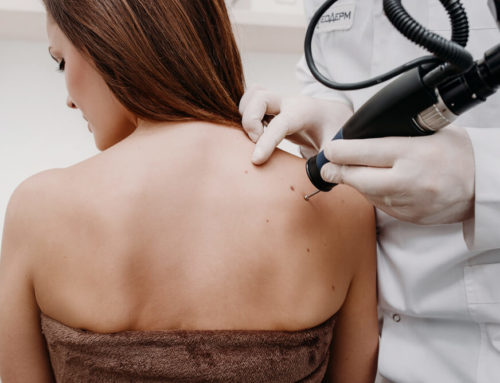Discovering a lump under your skin can be a worrisome experience, but lipoma is one common culprit of such lumps. These slow-growing bumps are usually benign and won’t necessarily require extensive lipoma treatment.
In this comprehensive guide, we will delve into the world of lipomas to provide you with a clear understanding of this benign yet sometimes bothersome condition. The expert team at Advanced Surgical Physicians explores what a lipoma is, its symptoms, causes, diagnosis, and available treatment options.
If you’re concerned that you might need skin lesion treatment in Palm Beach County or the area, feel free to schedule an appointment with us after reading the article.
What is a Lipoma: Understanding Lumps Under The Skin

A lipoma is a slow-growing lump composed of fatty tissue, typically found between the skin and the underlying muscle layer. Characterized by its doughy texture, lipomas are usually painless and easily movable when applying gentle pressure. The good news is that lipomas are generally non-cancerous and considered harmless. They tend to appear in middle age but can develop at any stage of life. Some individuals may even develop multiple lipomas.
Symptoms of Lipomas
Lipomas can manifest anywhere in the body but are commonly found in areas such as the neck, shoulders, back, abdomen, arms, and thighs. Notable characteristics of lipomas include their subcutaneous location just below the skin’s surface, soft and doughy texture, and easy mobility with gentle finger pressure. While lipomas are typically small, usually less than 2 inches in diameter, they can grow over time. Although most lipomas are not painful, they can cause discomfort if they grow and press against nearby nerves or contain many blood vessels.
While lipomas are generally not a severe medical concern, it is essential to consult a medical professional when you discover a lump or swelling on your body. This is vital to rule out more severe conditions like liposarcoma, a cancerous tumor that shares some symptoms with lipomas. Liposarcomas grow rapidly, do not move under the skin, and are usually painful. If liposarcoma is suspected, your doctor may recommend a biopsy or imaging tests such as MRI or CT scans.
Lipoma Causes and Risk Factors
The exact cause of lipomas remains somewhat elusive, but genetics are believed to play a significant role. They often run in families, and if someone in your family has had a lipoma, you may be at a higher risk of developing one. Other factors that may increase your risk of developing a lipoma include your age, with lipomas being most common in individuals between 40 and 60 years old.
Diagnosis
Diagnosing a lipoma typically involves a few steps:
- Physical Examination: A healthcare provider will begin the diagnosis with a physical examination. The lump’s texture, mobility, and any associated discomfort are assessed during this examination.
- Biopsy: In some cases, a biopsy may be required to confirm the diagnosis. During this procedure, a sample of the lipoma is removed and sent for testing to rule out the possibility of cancer or other concerning conditions.
- Imaging Tests: In situations where the lipoma is unusually large and deeply located, or if other complications are suspected, imaging tests such as ultrasound, MRI, or CT scans may be ordered. These tests provide a more comprehensive view of the lipoma’s size, location, and impact on nearby nerves or tissues.
Types of Lipomas
Lipomas primarily consist of fat, but there are various types of lipomas containing additional tissues, including:
- Angiolipomas (which include blood vessels)
- Conventional lipomas (made up of white fat cells)
- Fibrolipomas (a combination of fat and fibrous tissue)
- Hibernomas (containing brown fat)
- Myelolipomas (with fat and blood cell-producing tissues)
- Spindle cell lipomas (featuring elongated fat cells)
- Pleomorphic lipomas (exhibiting fat cells of varying sizes and shapes).
LipomaTreatment Options
In many cases, lipomas do not require any treatment, especially if they are small, painless, and do not cause discomfort or cosmetic concerns. However, if a lipoma becomes bothersome or painful or continues to grow, treatment options are available, including surgical removal and liposuction. Surgical removal is the most common approach and is known for its minimal scarring and rare recurrence. Liposuction, however, is a less invasive option, ideal for some instances.
Surgery
Surgical removal of lipomas, a common and usually straightforward procedure, involves several key steps. First, the patient is typically administered local anesthesia to numb the area around the lipoma, ensuring a painless experience. Then, the surgeon makes a small incision over the lipoma to access and remove the fatty tissue. Depending on the size and location of the lipoma, the surgeon may need to make a deeper incision to reach the affected area. Once the lipoma is excised, the incision is carefully sutured closed. This process is typically performed as an outpatient procedure, allowing patients to return home the same day. After surgical removal, recurrence of lipomas is rare, and any potential side effects, such as scarring and bruising, are usually minimal. This approach provides a safe and effective means of addressing bothersome or painful lipomas, offering patients relief and improved cosmetic appearance.
Prevention
Preventing lipomas and associated conditions can be challenging since they are often hereditary. However, if you are concerned about Madelung’s disease, linked to excessive alcohol consumption, you can reduce your risk by limiting alcohol intake.
Madelung’s disease, also known as multiple symmetric lipomatosis, is a rare and benign medical condition characterized by the abnormal growth of fatty tissue deposits, or lipomas, typically in the neck and shoulder areas. These lipomas can accumulate symmetrically and become large, leading to a noticeable deformity. While the exact cause of Madelung’s disease remains uncertain, it is often associated with excessive alcohol consumption and can be more prevalent in men. The condition can cause discomfort and impair mobility, making it a concern for those affected. Treatment options may include lipoma removal procedures to alleviate symptoms and improve the individual’s quality of life.
Prognosis

The outlook for individuals with lipomas is generally positive. In most cases, lipomas do not require treatment and can coexist without causing issues. Surgical removal is safe and minimally invasive, with low recurrence rates. Living with lipomas is common, and regular monitoring and prompt consultation with your healthcare provider in case of any changes or discomfort are essential.
Reach Out To Learn More
In conclusion, while lipomas are benign and typically harmless, understanding their characteristics, diagnosis, and available treatment options is crucial. Consulting with a healthcare provider is essential when dealing with lumps or growths under the skin to rule out more severe conditions. Whether you choose to live with your lipoma or opt for removal, you can navigate your journey confidently with a better understanding of this common condition.
Lastly, if you’d like to learn more about options regarding treatment or would like to know about additional diagnostic information, please feel free to schedule an appointment with our experienced and compassionate staff. We are more than ready to answer your questions and concerns.





